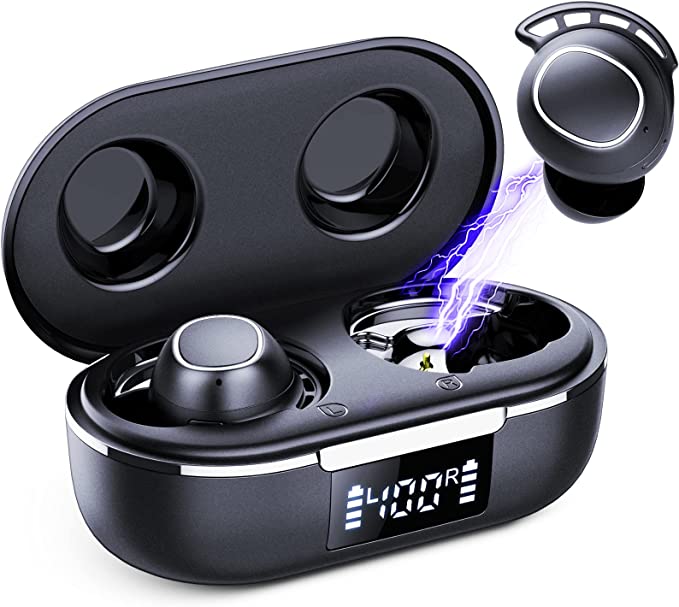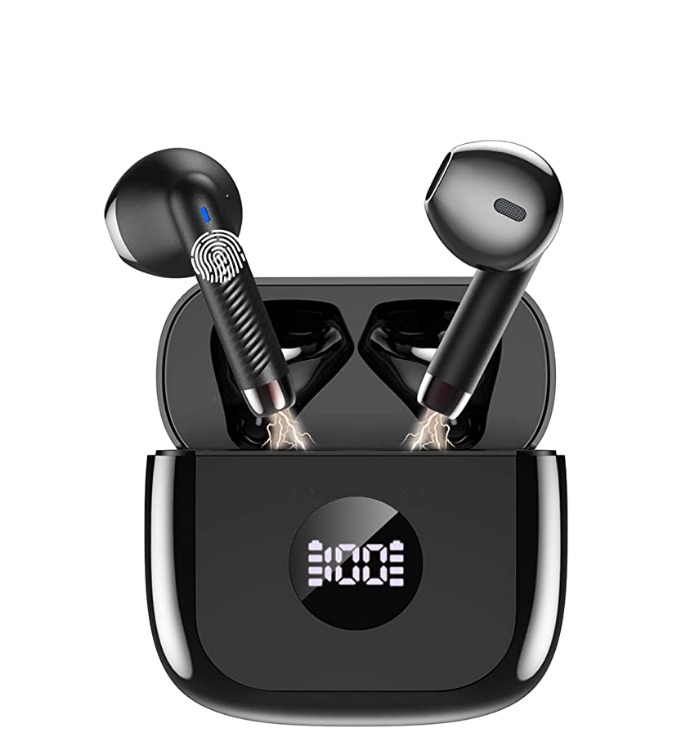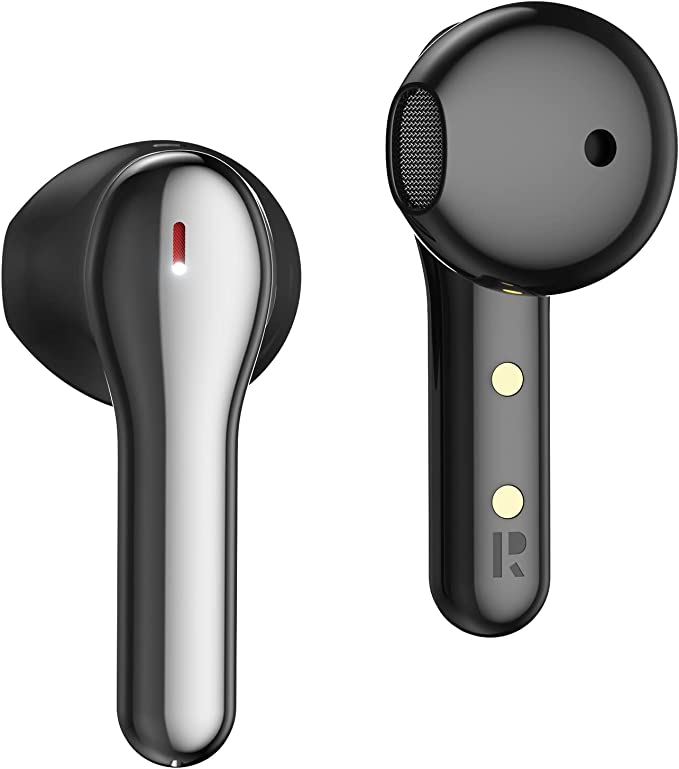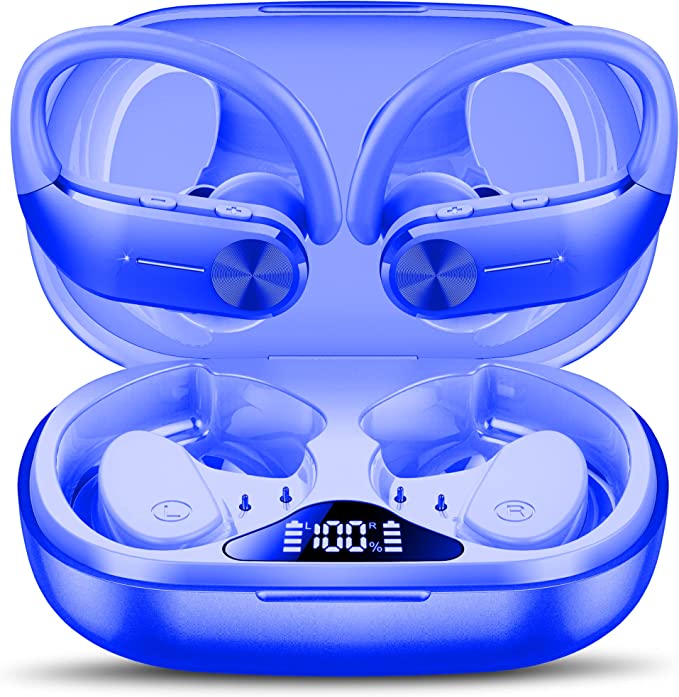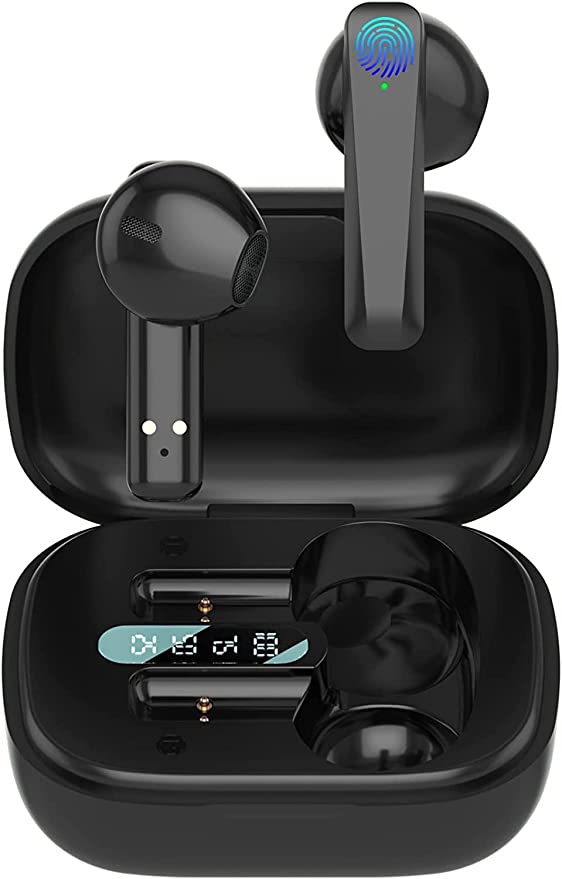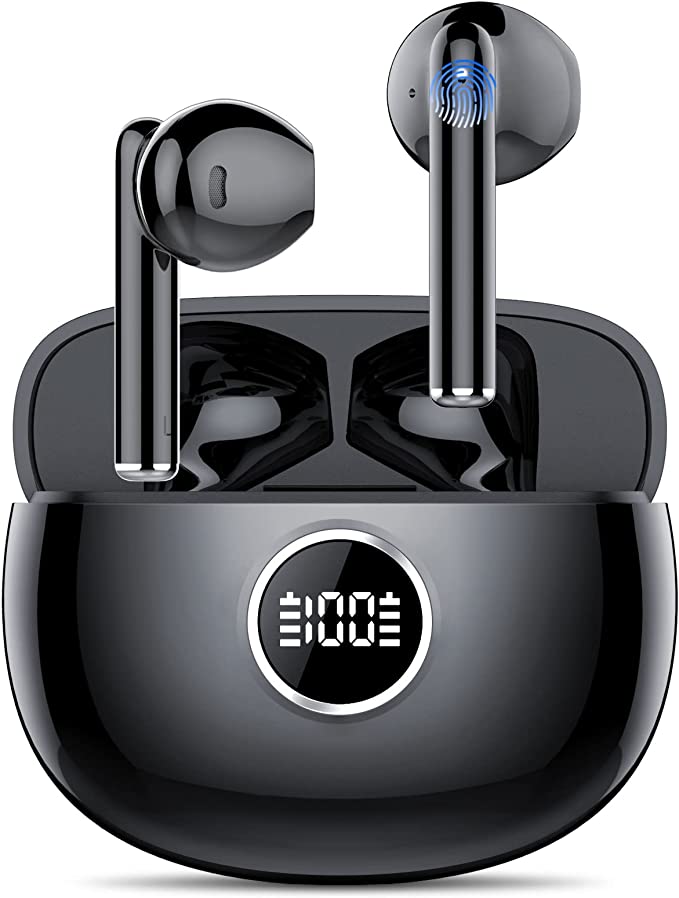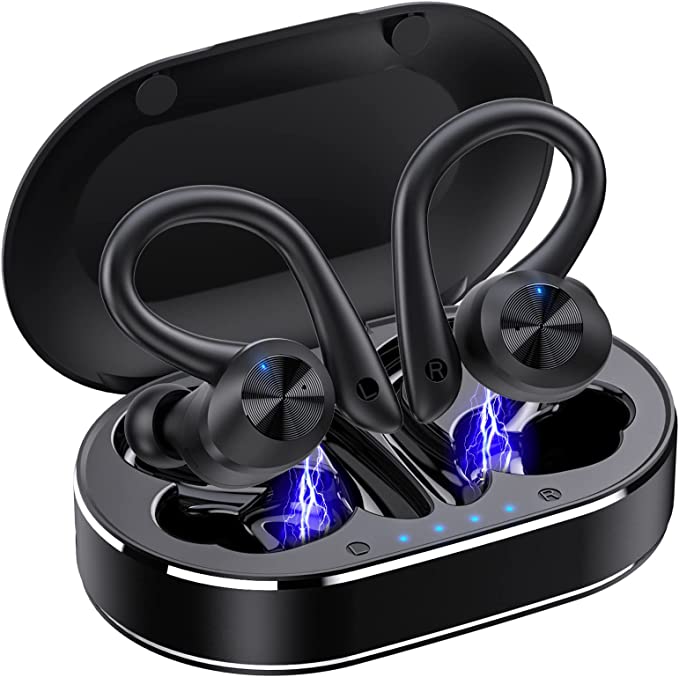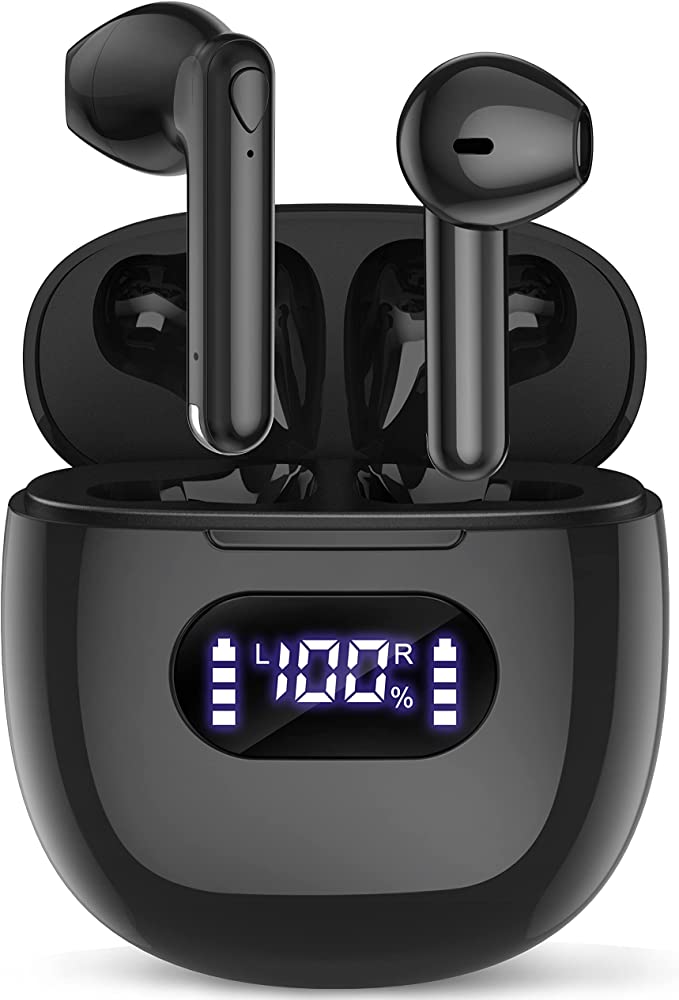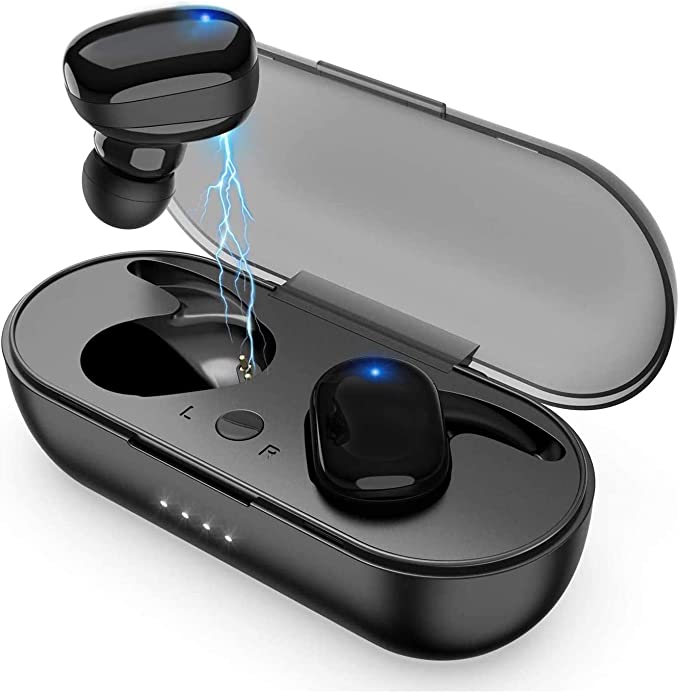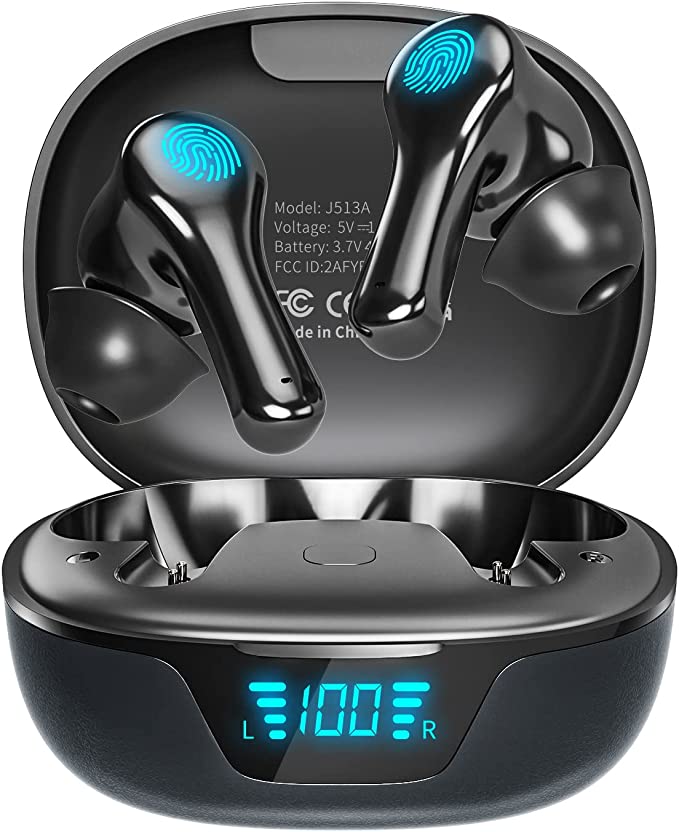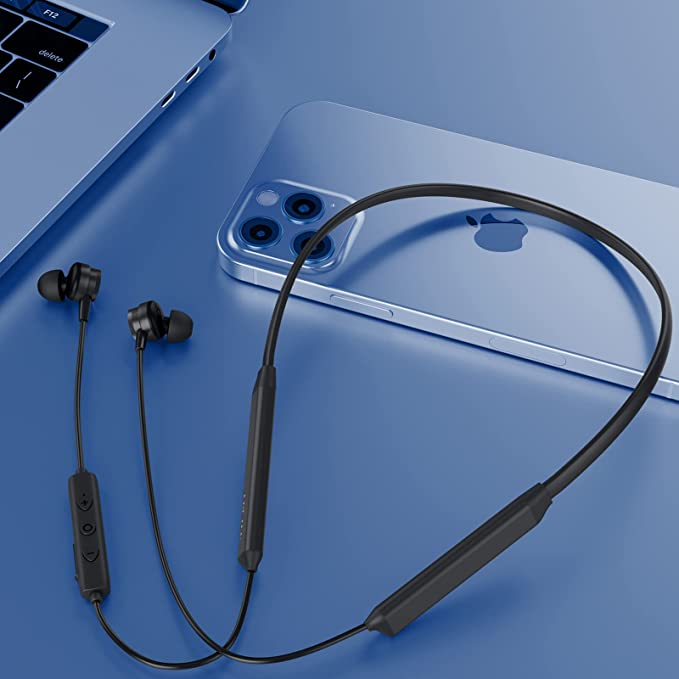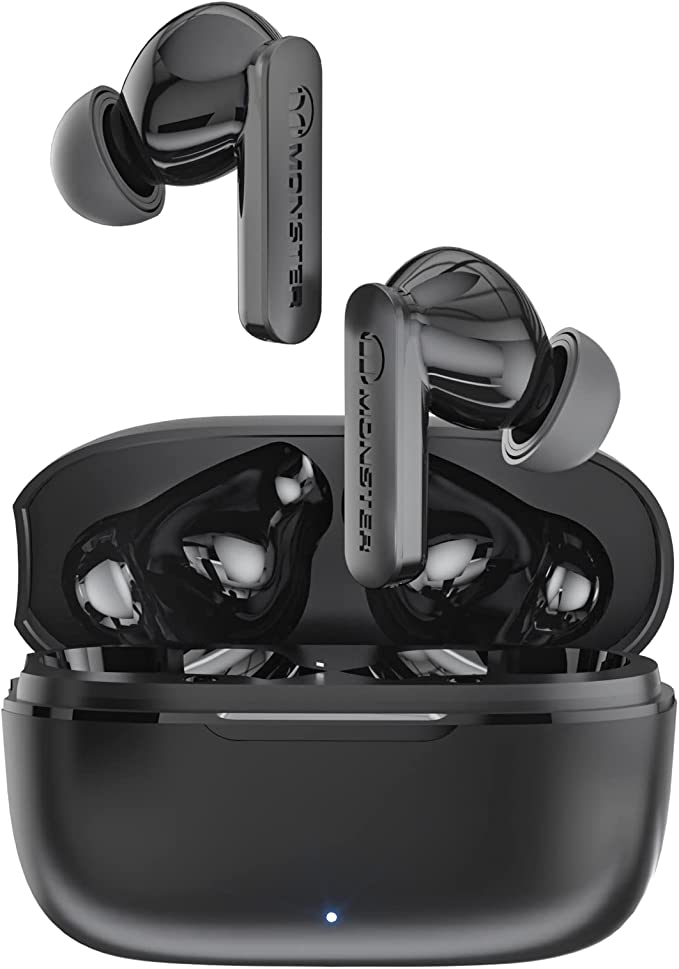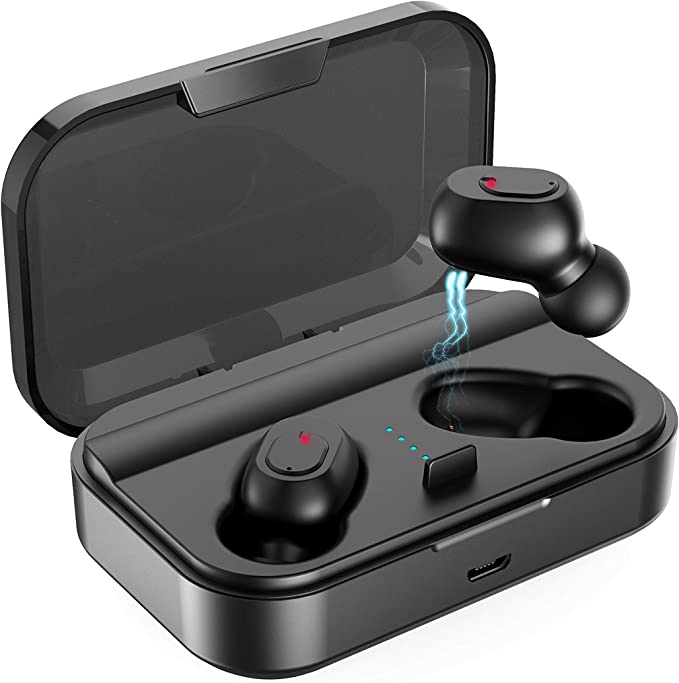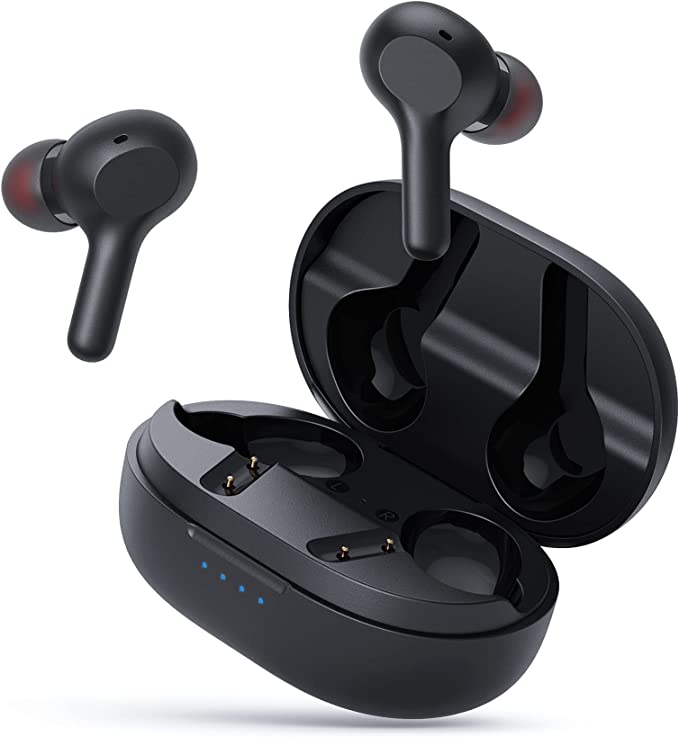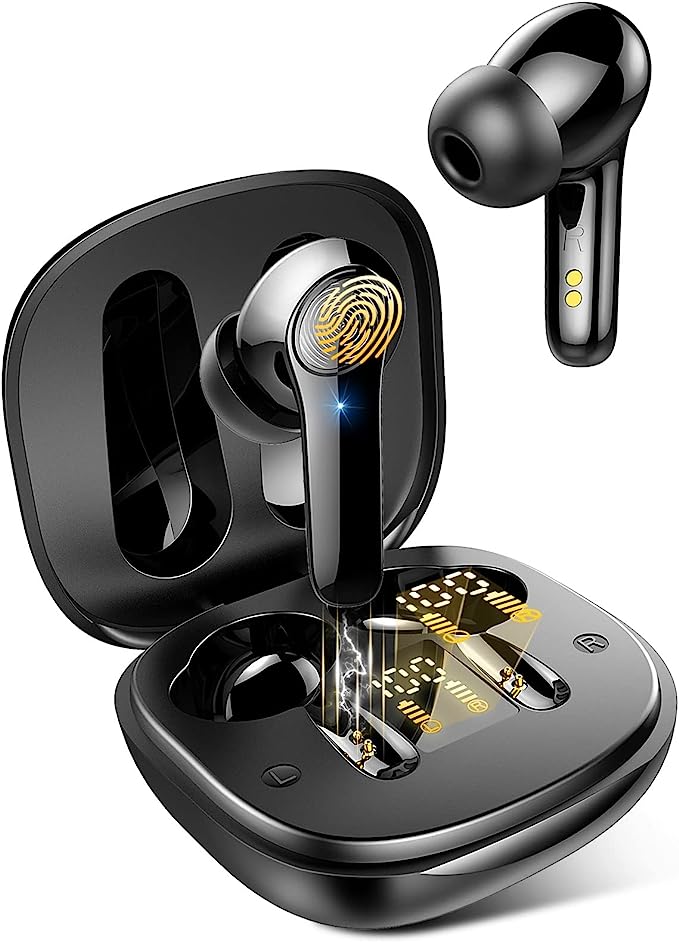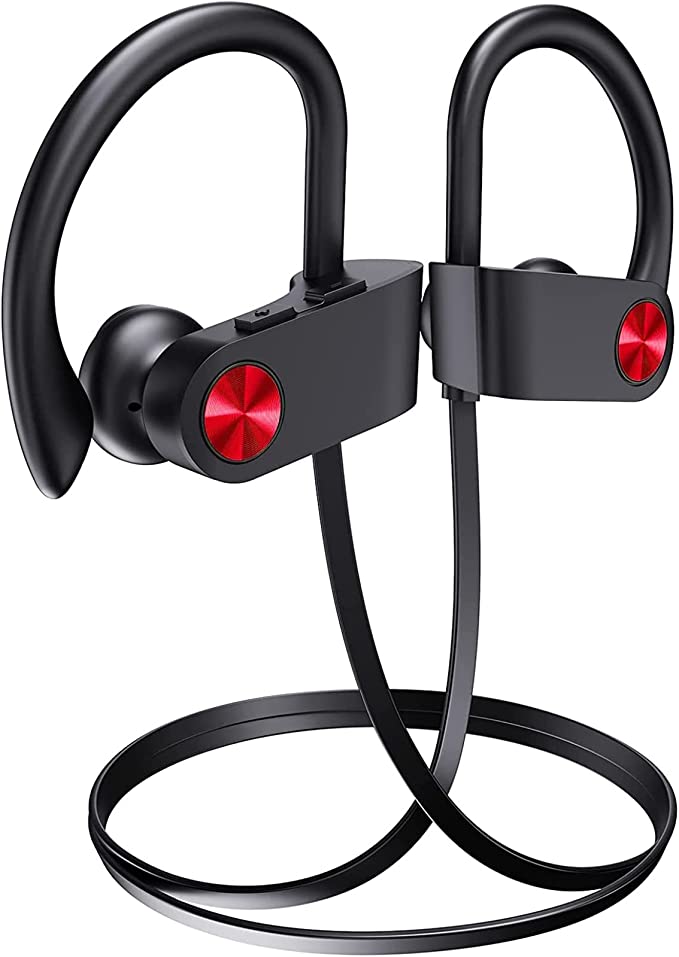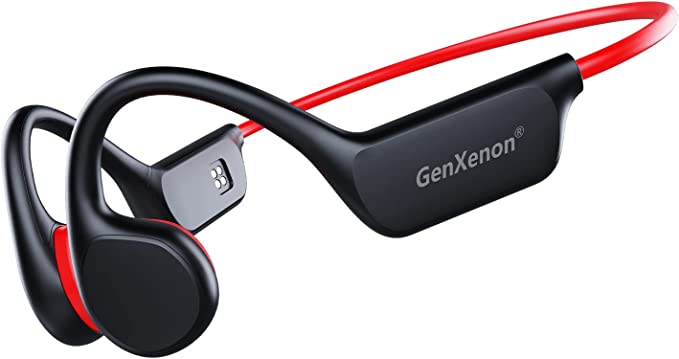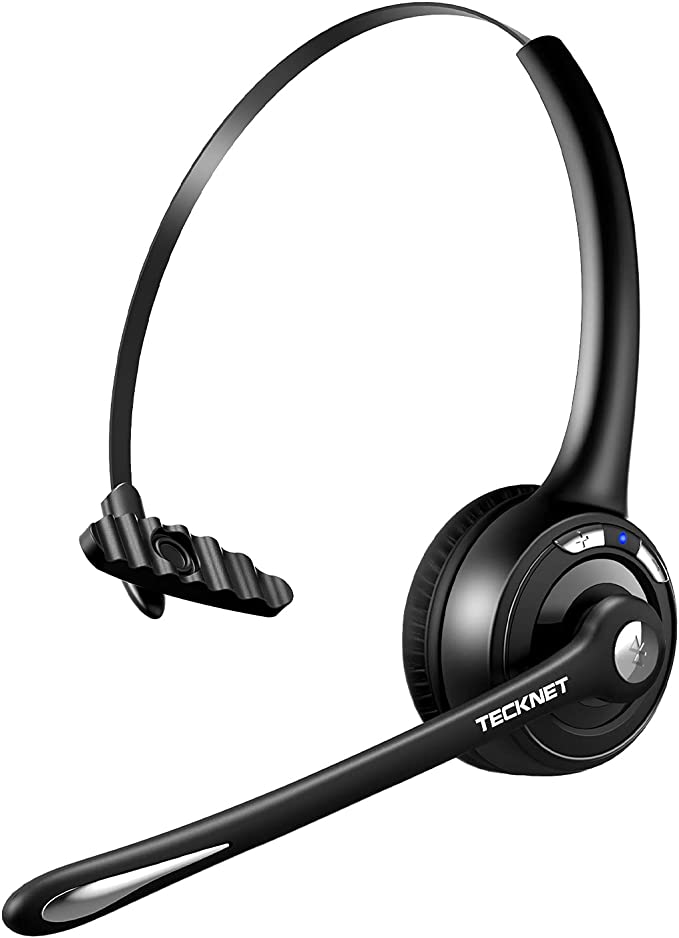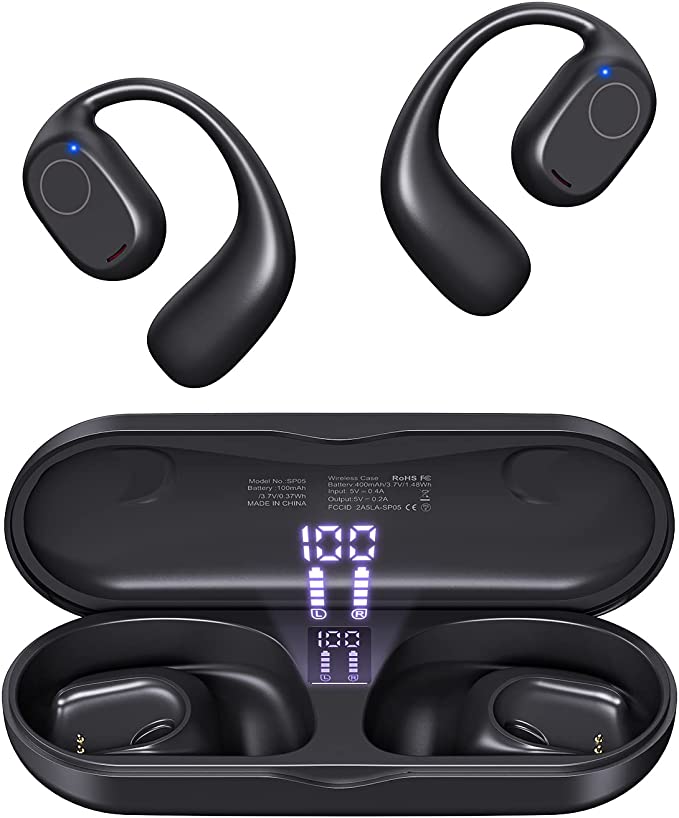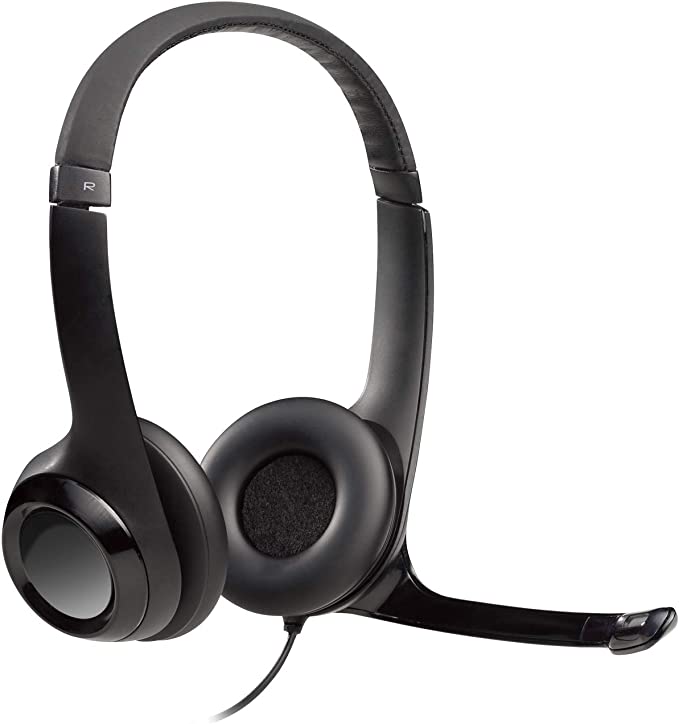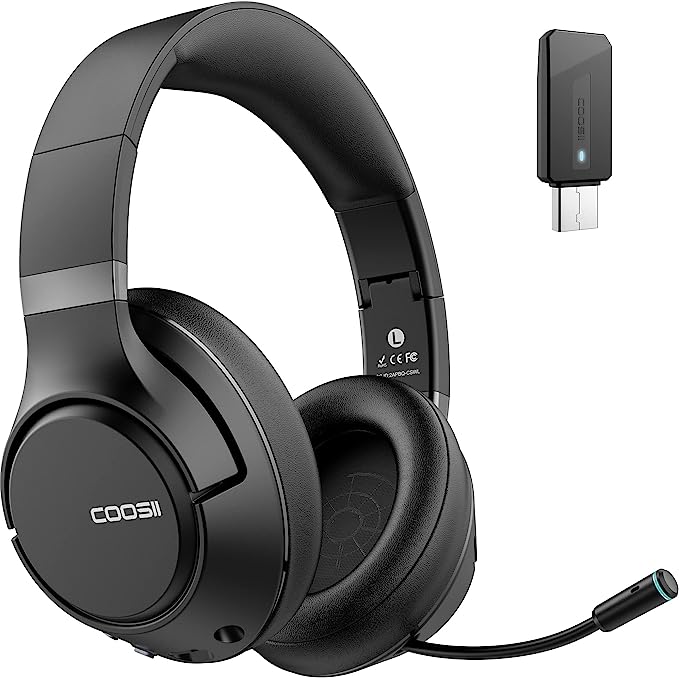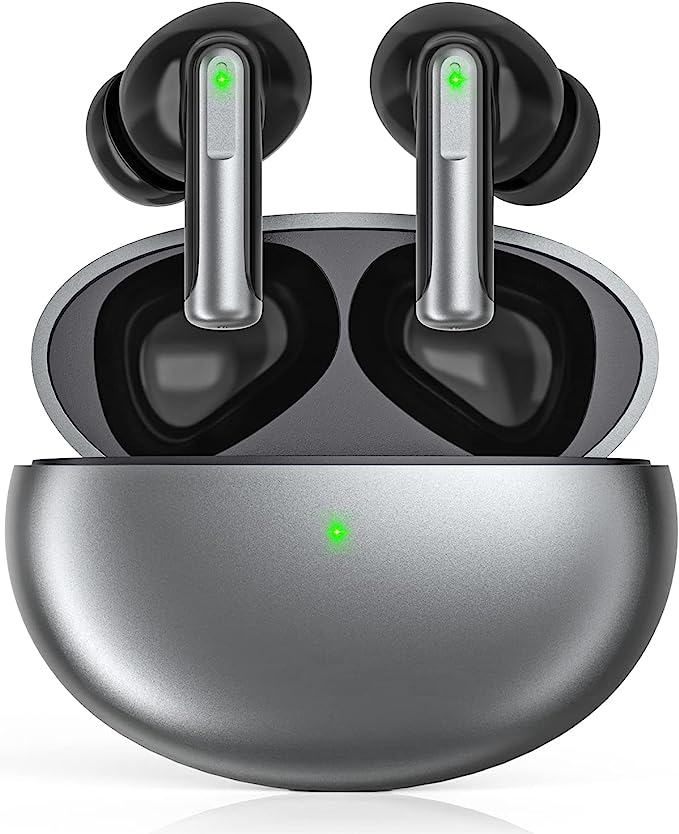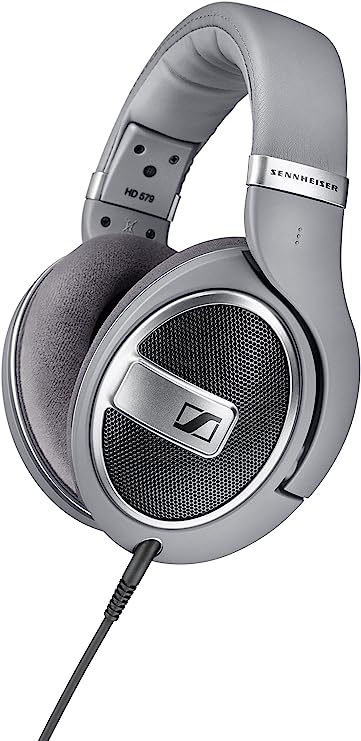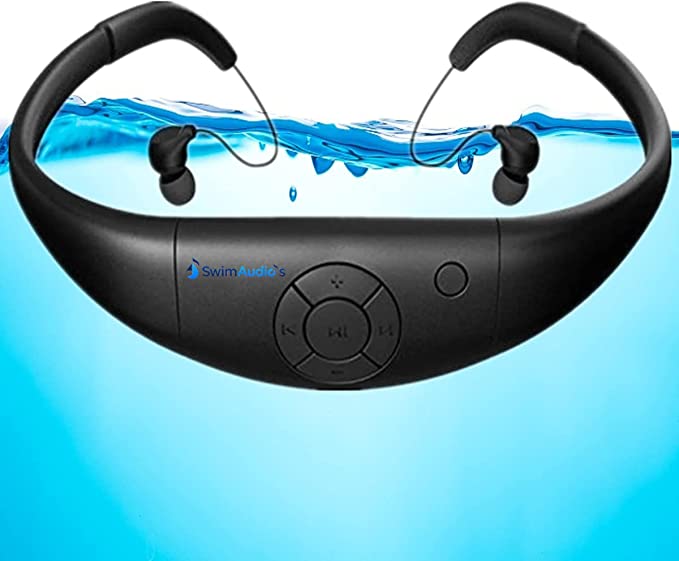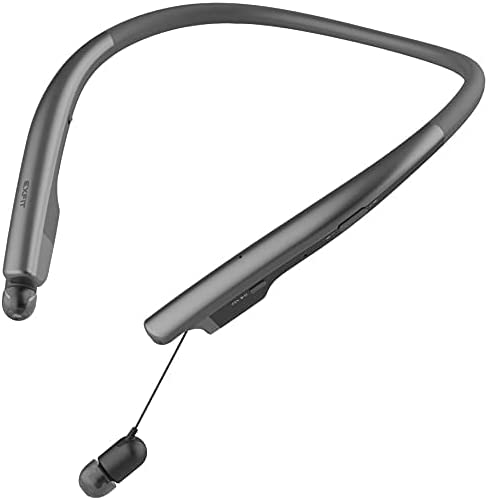GOALSEN J-Series J03 Exquisite Bluetooth Headphones – Dual Bluetooth Wireless Earbuds Pressure-Touch Control
Update on June 22, 2025, 4:09 p.m.
In an age where digital life flows seamlessly with our physical existence, wireless earbuds have transformed from a niche accessory into an everyday necessity for millions. These tiny marvels, nestled in our ears, deliver symphonies, connect us with loved ones, and provide a soundtrack to our workouts. But have you ever paused to consider the intricate tapestry of science and engineering woven into such a compact device? The GOALSEN J-Series J03 Exquisite Wireless Headphones offer us a perfect lens through which to explore this fascinating world, a world where physics, material science, and digital intelligence converge to create a personal audio experience.

The Alchemist’s Art: Crafting Sound Within the J03
At the very soul of any audio device lies its ability to transform electrical signals into the rich tapestry of sound we perceive. This is no less true for the J03, and its auditory heart beats with a “13mm high-fidelity composite titanium membrane unit.” Let’s unpack the science behind this.
The Heart of the Matter: The 13mm Composite Titanium Driver
Imagine a miniature, highly sophisticated drum. This is, in essence, what a speaker driver’s diaphragm or “membrane” is. When an electrical audio signal arrives, this membrane vibrates with incredible precision, pushing and pulling the air around it. These rapid air pressure changes travel as sound waves, eventually reaching your eardrums, which then translate them into neural impulses our brain interprets as music, voice, or the immersive sounds of a game.
The choice of “titanium” for this membrane is deliberate. Titanium is a remarkable metal, renowned for its exceptional strength-to-weight ratio. In acoustic terms, its rigidity means the diaphragm resists deforming or “breaking up” even when reproducing complex sounds or at higher volumes. This translates to clearer, more accurate sound with less distortion. Simultaneously, its lightness allows the diaphragm to respond with incredible speed to the nuances in the electrical signal – an attribute engineers call good “transient response.” This agility is crucial for rendering crisp high notes and subtle details in music. The “composite” nature likely refers to a construction that leverages titanium’s best properties, perhaps by bonding it with other materials to fine-tune its damping characteristics and overall performance, aiming for that elusive “high-fidelity.”
The Pulse of the Beat: Understanding “Bass Boost Tech”
Many of us crave that satisfying low-end punch in our music – the deep thrum of a bass guitar or the resonant kick of a drum. The J03 incorporates “bass boost tech” to deliver “surging and powerful” bass. Achieving robust bass in the constrained space of an earbud is a significant engineering feat. It’s not just about cranking up the low frequencies, which can lead to a muddy, undefined sound.
Effective bass enhancement often involves a two-pronged approach. Firstly, acoustic engineering plays a vital role. The internal chamber design of the earbud itself can be optimized to act as a resonant cavity, naturally amplifying certain low frequencies. Secondly, Digital Signal Processing (DSP), which we’ll explore more later, can intelligently shape the audio signal, selectively boosting bass frequencies while maintaining overall clarity and balance. The goal is a bass that is felt as much as heard, providing a pleasant “rebound” without overwhelming the rest of the sonic spectrum.
The Pursuit of Purity: What “HIFI Sound Quality” Truly Means
“HIFI,” or High-Fidelity, is a term often used, but what does it scientifically represent? At its core, HIFI is a commitment to reproducing sound as faithfully and accurately as possible to the original recording or source. It’s about minimizing loss and distortion, allowing the listener to experience the audio as the artist or sound engineer intended. For the J03, this aspiration is described as achieving a “three-band balanced” sense of hearing – ensuring that the low frequencies (bass), mid-frequencies (where vocals and most instruments reside), and high frequencies (cymbals, subtle details) are all presented clearly and in proper proportion. The aim is for “low-frequency volume and rebound pleasant benefits, and the mid-to-high frequency is mellow and durable,” creating an immersive and enjoyable listening experience.

The Invisible Tether: Mastering Wireless Connectivity and Stability
The magic of wireless earbuds lies in their freedom from cumbersome cables. But this freedom relies on sophisticated wireless technology to maintain a clear and stable connection, especially in our increasingly crowded airwaves.
The Digital Guardian: The DSP Anti-Jamming Chip
The J03 features “a new generation of DSP anti-jamming chip,” promising a “smooth connection” even in challenging environments. A DSP, or Digital Signal Processor, is a specialized microprocessor designed to perform complex mathematical operations on digital signals – like audio or radio waves – in real time. Think of it as a highly intelligent traffic controller for data.
In the context of “anti-jamming,” this DSP is constantly analyzing the Bluetooth signal. Our environment is often saturated with various radio frequencies – Wi-Fi routers, microwave ovens, other Bluetooth devices – all of which can potentially interfere with your earbud’s connection. The DSP employs clever algorithms to distinguish the desired audio signal from this unwanted “noise.” It might achieve this through techniques like adaptive filtering (identifying and subtracting interference patterns) or by working in concert with the Bluetooth radio to rapidly switch frequencies (a concept known as frequency hopping, inherent in Bluetooth) to find clearer channels, thus minimizing dropouts and stutters.
True Independence: The “Dual Sides are Main” Architecture
A significant evolution in True Wireless Stereo (TWS) technology is the move away from the traditional master-slave earbud relationship. Early TWS earbuds had one designated “master” earbud that connected to your phone and then relayed the signal to the “slave” earbud. The J03, however, states that “Dual sides are the main Bluetooth earphones regardless of the main and auxiliary earphones,” thanks to an “intelligent dual-mode processing chip.”
This means each earbud can establish its own independent connection with the source device (your phone, tablet, or computer). The benefits are numerous: a more robust and stable connection overall, as there isn’t a single point of failure; the ability to use either earbud individually for calls or mono audio playback seamlessly; and smoother, quicker pairing. It also simplifies sharing, as you can hand one earbud to a friend, and both will receive a clear stereo (or independent mono) signal.
In Sync: The Quest for Low Latency in Gaming and Video
For anyone who enjoys gaming or watching videos on the go, audio latency – the delay between an action происходящее on screen and hearing its corresponding sound – can be incredibly jarring. The J03 claims “Almost No delay in the game.” Achieving low latency in wireless audio is a complex dance involving multiple factors.
The Bluetooth audio codec used (the algorithm that compresses and decompresses audio for wireless transmission) plays a significant role; some codecs are designed for lower latency than others. Beyond the codec, the efficiency of the DSP in processing the audio, and the overall design of the Bluetooth chipset contribute to minimizing this lag. The goal is to ensure that the sound of a footstep in a game or the dialogue in a movie is perfectly synchronized with the visuals, maintaining immersion and responsiveness.

The Language of Touch: Innovating Interaction
How we control our miniature audio companions is just as important as how they sound or connect. The GOALSEN J03 introduces “Side fingerprint pressure-touch blind spot velocity sensing,” aiming to overcome common frustrations with traditional touch controls.
Beyond the Tap: The Science of Pressure-Touch Control
Many earbuds use capacitive touch sensors, which detect the change in electrical capacitance caused by your finger. While convenient, these can sometimes be overly sensitive, leading to accidental plays, pauses, or skips when adjusting the earbud or if brushed by hair or clothing.
The J03’s “pressure-sensitive design with precise physical feedback” suggests a different approach, likely employing sensors that respond to actual physical force or pressure. This could involve miniature strain gauges or piezoelectric materials that generate a small electrical charge when deformed by a press. The key advantage is a more deliberate and intentional control mechanism. The claim that it “completely solves the problem that the touch points of traditional Bluetooth headsets cannot be accurately found, and the probability of false touches is reduced by 95%” hinges on this requirement for a distinct press rather than a light touch.
The intriguing phrase “Side fingerprint pressure-touch blind spot velocity sensing” hints at even greater sophistication. “Velocity sensing” could imply that the system not only detects that you’ve pressed but also how quickly or how firmly you’ve pressed, potentially allowing for different commands based on the gesture’s dynamics, even if you’re not precisely hitting a tiny target area – hence, “blind spot.” This moves towards a more intuitive and forgiving control scheme.

Engineered for Endurance: Power and Durability for Daily Life
For devices that accompany us through workouts, commutes, and long days, resilience and reliable power are paramount.
Braving the Elements: The Science of Sweat Resistance
The J03 is designed to be “Sweat Resistant for Gym Running Workout.” Sweat, with its salts and moisture, can be corrosive to sensitive electronic components and can cause short circuits. The “Multi-process design of the headphone body” mentioned in the product description likely refers to a combination of protective measures. This could include the use of water-repellent nano-coatings on internal circuitry, precisely engineered seals around casing joints and microphone openings, and the selection of corrosion-resistant materials. While no specific IP (Ingress Protection) rating is provided, the intent is clear: to create a barrier that “effectively prevent dust and sweat from damaging the components,” allowing you to focus on your activity without worry.
The Unseen Powerhouse: Battery Life and Fast Charging
The promise of “upto 12 hours talk time and 24 hours music time (work with charging compartment)” is a testament to the efficiency of modern Lithium-ion battery technology and power management. These batteries pack a significant amount of energy into a very small volume and weight, making them ideal for portable devices. The total playtime is a combination of the battery capacity within each earbud and the additional charges provided by the portable charging case itself.
Furthermore, the convenience of “Type-C lightning fast charge” – “Charging for 10 minutes, listening to songs for 2 hours” – addresses the dreaded “battery anxiety.” Fast charging works by carefully managing the voltage and current delivered to the battery. Typically, in the initial phase, a higher current is supplied for rapid charging, which then tapers off as the battery approaches full capacity to protect its health and longevity. The system also incorporates “protection battery full charge of automatic power off,” a crucial safety feature that prevents overcharging, which can degrade battery performance and lifespan over time.
Comfort by Design: The Ergonomic Equation
A key, though often unsung, aspect of earbud design is ergonomics. The claim of being “Comfortable to wear” and having an “Ergonomic design, perfect integration with ears” points to careful consideration of the human ear’s complex anatomy. This involves shaping the earbuds to sit securely yet gently within the concha and ear canal, often utilizing various ear tip sizes to accommodate individual differences. The goal is to distribute weight evenly and minimize pressure points, allowing for extended listening sessions without discomfort, whether you’re on a long run or a cross-country flight.
Clarity in Conversation: The Built-in Microphone System
In our connected world, earbuds are frequently used for calls. The J03 includes a “Built-in Mic” and promises “Binaural HD call” with “Noise reduction technology.”
Capturing your voice clearly in a variety of environments is a challenge. The integrated microphones, likely tiny MEMS (Micro-Electro-Mechanical Systems) components, are designed to pick up your voice. The “Noise reduction technology” mentioned is crucial for call clarity. This often involves sophisticated algorithms, sometimes running on the same DSP that handles audio playback and anti-jamming. These algorithms attempt to distinguish your voice from ambient sounds (traffic, chatter, wind) and suppress the latter, making your voice more intelligible to the person on the other end. Some systems might even use multiple microphones per earbud to create directional sensitivity (beamforming), further focusing on your voice and rejecting off-axis noise.

Conclusion: The Symphony of Science in Your Ears
The GOALSEN J-Series J03 Exquisite Wireless Headphones, in their chic pink casing, are far more than just a stylish accessory. They represent a remarkable convergence of acoustics, material science, wireless communication engineering, sophisticated digital signal processing, and ergonomic design. Each feature, from the resonant thump of the bass to the reliability of a pressure-touch command, is underpinned by years of scientific research and technological refinement.
As we slip these tiny powerhouses into our ears, it’s worth appreciating the unseen symphony of science that makes our wireless audio world possible. It’s a world where the pursuit of higher fidelity sound, more stable connections, intuitive control, and enduring power continues to drive innovation, all with the ultimate aim of enriching our daily lives with the power and pleasure of sound, untethered and uninterrupted. The journey of personal audio technology is ever-evolving, and devices like the J03 offer a fascinating glimpse into its current, impressive state.


